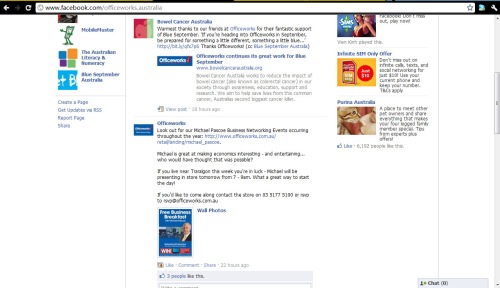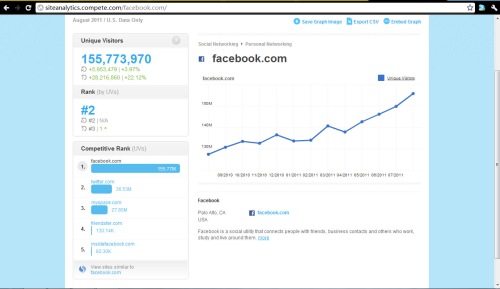Social networks are utilized to contact and brand enterprises with various groups and sub-groups with multiple cultural context and interests. As an enterprise who intends to maintain and board their market share, participating and keeping online connection via a number of social networks is necessary. Customers and public contacts for Officeworks have different cultural background, speak different languages, work in different professional spheres, which means, they use different online social network applications. In some cases, a large part of them may take advantages of multiple social networks. For instance, a governor may use Facebook for communications between family members and friends, while she/he properly (or not) also updates a linkedIn account frequently.
Time and budget are precious resources for enterprise in all cases, thus, marketing department must limit cost on online social network. In this case, enterprises need to page social networks which their target customers use.
Officeworks cover twitter, Facebook for their external communication purpose, while linkedIn is used in professional area. Officeworks use Facebook and twitter because both of them are popular web 2.0 applications which own large population from different backgrounds. Definitely, a vast number of their customers are using these tools with high frequency. Many other enterprises and organizations manage their online social network for the same reason, without survey or further investigation. It does reduce cost before real online social networking, but effectiveness and efficiency are ignored as a part of benefits.
From my view, there are some steps an enterprise should do for their online marketing. Here, we will take Officeworks as an instance.
- Investigate customer data, which may include their job, occupation, languages, main online social network options, and frequency of their online social networking. For officeworks it can be done online or short question surveys.
- Select three or more major popular social networks as targets of Officeworks online social networking. One important thing in this step is many social networks are similar in functions. Hence picking social networks with different features must be underlined.
- Set online social networking strategy for these located social networks. Due to characters these social network play and outstanding features they have, Officeworks need to understand difference and unique features of different types of social networks and set different strategy for them.
- Set regular activities for online social networking within settled strategy. As for as I concern, fast replying on these social networks should be included. Officeworks have facebook page and group currently, but they use them as information publishing more than communication. Even for communication, they seldom answer questions from individual followers. This is what they need to improve.
- Get feedback from their visitors and followers in these social networks. This will enhance online social networking performance.Based on our research, Officeworks attempted to use Facebook as a part of marketing strategy. But there is something they missed or ignored, while these points are valuable in their Facebook marketing strategy.
Officeworks use Facebook to publish information, but their customers can hardly notice it, sometimes just ignore it. Because, target audiences of Officeworks Facebook page now are only big organizations. Small groups and individual customers are keen to be cared. To perform this, fast post is the first thing to do. Then product information should be added in their Facebook page which allows others to comment and share. Each information and product should be associated with at least one image.






